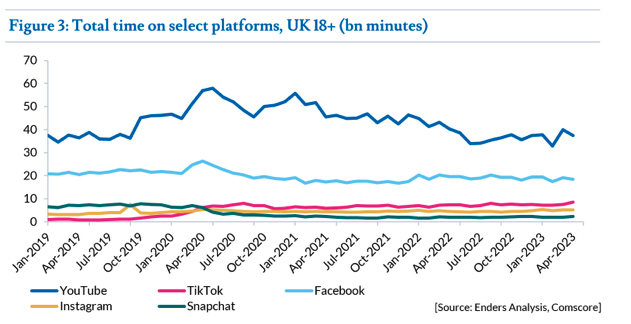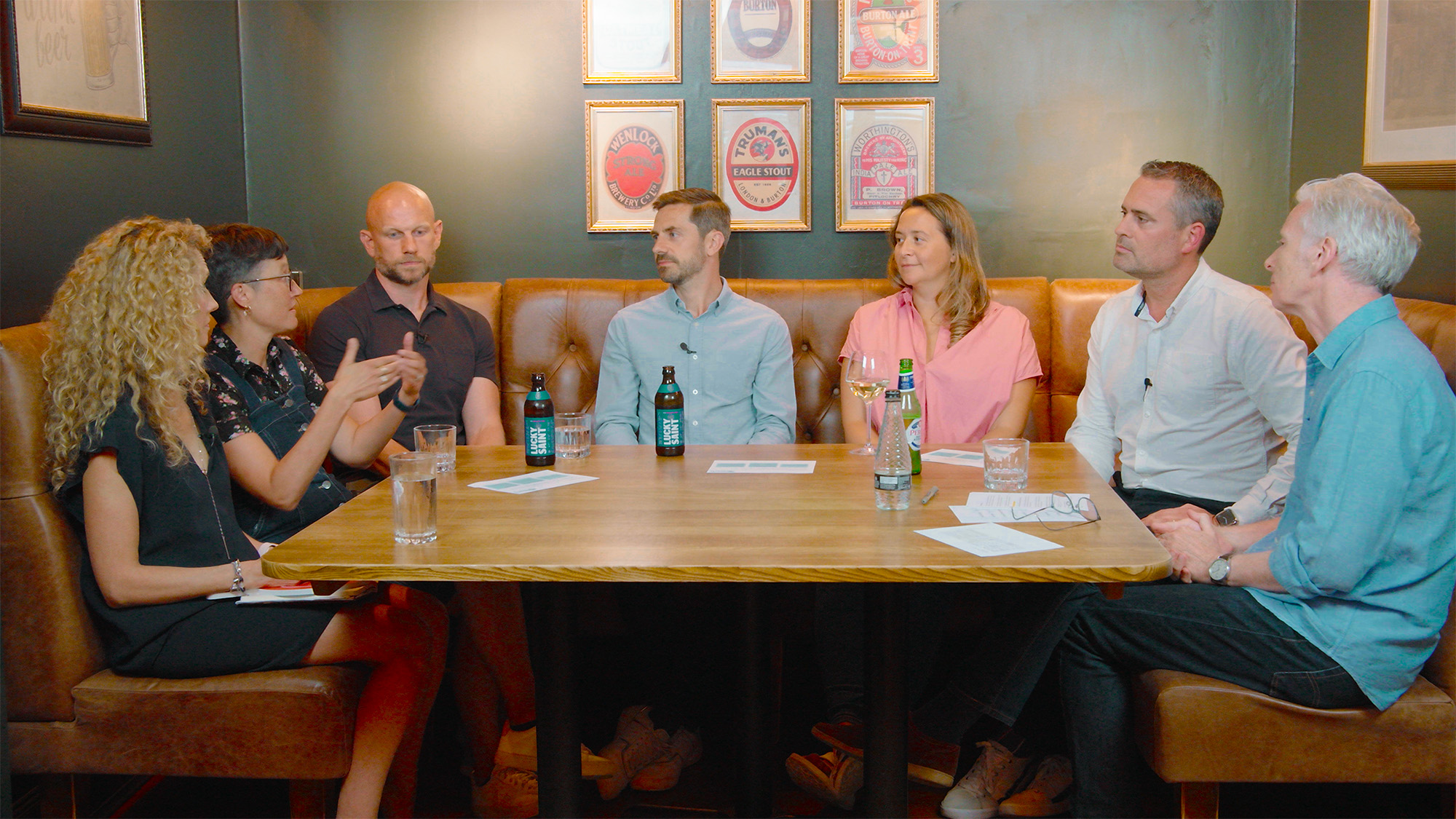Fit for TV? YouTube hits Mr Beast and ‘Chicken Shop Date’ put to the test

Feature
What sorts of YouTube content are ‘fit for TV’? Barb Audiences assembled a panel of industry experts to decide.
There was a time, long before it was the world’s second most-visited website, when YouTube was almost synonymous with “cat videos”.
Today, the Google-owned video giant is not just a major global content and advertising platform — it’s a virtually indispensable publishing vehicle for an entire generation of self-made content creators who are regularly publishing videos with high production values and embracing new forms of creativity.
It is also being increasingly used by TV and audio broadcasters as a distribution channel. Whereas in recent years it has become commonplace to movie studios to publish movie trailers, or sports broadcasters to pump out highlights reels, YouTube is now striking revenue partnership deals. Channel 4, for example, puts out its video-on-demand content on YouTube.

So YouTube is popular (more than 2.5 billion monthly users) and there is a lot of content being published every day (3.7 million hours). Naturally, advertisers are keen to be where large audiences are, especially if those audiences are targetable and are generally harder to reach on traditional channels like TV and radio. And, due to the widespread use of internet-connected TVs, people are increasingly watching YouTube on bigger screens.
However, while audiences may increasingly perceive YouTube to be TV, or “TV-like”, it is not TV as the existing advertising industry knows it. This was abundantly clear when Barb Audiences, the UK’s TV measurement company, published this year the results of an industry consultation that informed the creation of a “fit for TV” standard for user-generated video platforms that want to be measured by Barb.
Barb’s shareholders, which for four decades have been the UK’s major broadcasters, are keen to ensure that premium standards are maintained. According to Barb, content that is “fit for TV” must meet the following benchmarks:
- Editorial input and oversight
- Regulatory compliance, or an intention to deliver content that aligns with prevailing regulation
- Content that provides a safe and suitable environment for advertisers.
When discussing “fit for TV” for the first time publicly, Barb CEO Justin Sampson admitted in February that: “We don’t yet have all the answers for how and when we will extend our reporting of content on video-sharing platforms…. our capabilities are always enhanced by the active participation of businesses that make content and the platforms that distribute it.”
So that’s exactly what Barb has done. Sampson’s team brought together a range of industry specialists — marketers, media owners and media planners — to dissect and debate eight very different YouTube videos.
The Media Leader attended the discussion for reporting purposes only and had no involvement with the selection of the panel or the YouTube content.
The panel

- (From left) Catherine Aithal, strategy partner, The Specialist Works
- Kate Waters, director of client strategy and planning, ITV
- James Cornish, VP of international sales, Vevo
- Rob Ellison, head of media Europe, Visa
- Rhian Feather, head of planning, OMD UK
- Sam Taylor, interim marketing director, Direct Line Group
- Tony Regan, managing partner, Work Research (moderator)
Video 1: Beach Ball (official music video) ft. Bia, by Busta Rhymes
The entire panel appears to squirm in their seats while discussing this raunchy music video, which begins with a woman’s body symbolising a beach, and a female sex organ depicted as fresh water. Throughout the video, Rhymes and fellow rapper Bia pair dance, vibe, and flirt with beachgoers.
It’s undoubtedly well produced, but does the offensive and sexually explicit content make it unfit for TV? A unanimous “no”, the panel concludes.
“It was a really good example of where I had to let go of my own personal subjectivity,” Aithal says. “Although it’s very misogynistic, and I would hate my daughter to watch it, it actually had high production values, it would be brand safe and it would align to regulatory requirements.”
Ellison, a financial services marketer, mentally applies the “MTV test”, in that he could see this video being published on a music channel after a watershed. “Would I want to advertise on it myself? That’s a different question,” he clarifies.
Cornish, whose platform Vevo publishes music videos on YouTube and freemium subscription channels, insists that videos like this are specifically “made for TV broadcast”.
Brand safety is not the same as brand suitability, Cornish explains. “It’s not uncontrolled, there’s nothing that we don’t have an editorial oversight over and view before we publish that content…. [It] might not sit well with individuals, but so are a lot of things that are shown on broadcast channels. The production, the creativity, every piece of content we make is rigorous and robust…. And then from an advertiser point of view [we] manage the nuance between certain categories and artists. So there’s complete transparency.”
VERDICT
YES: 6
NO: 0
Video 2: “Weather Alert! Storm Alwen!” by Big Jet TV
Taylor quips that this would be “fit for TV as long as they didn’t crash.”
Bit Jet TV attracted hundreds of thousands of viewers last winter when people tuned into to watch a livestream of planes landing at London Heathrow Airport during Storm Eunice.
Which, of course, exposes this video’s obvious failing when one applies the “fit for TV” standard — there is no editorial oversight being applied. For example, a news broadcaster would not show live footage of a disaster unfolding if there was a reasonable chance that the viewer would see a death or distressing imagery.
However, even when looking at this content as a “review” of planes being flown in extreme weather conditions, the panel was broadly dismissive.
While Waters describes it as “quite charming” and Feather admits she “could have watched it for hours” while experiencing the impact of recent storms herself, the brand suitability and editorial concerns were just too much.
Such as was it obvious enough that there was “old footage” or that this was an “ad for Big Jet TV to watch an upcoming episode”, Ellison points out.
Aithal is initially on the fence but has clear concerns: “I found it really compelling but it was really poor production quality and the voiceover was rubbish. If there was a top comedian narrating it, that would be absolutely hilarious. But it’s just a guy with a camera filming.”
VERDICT
YES: 1 (Feather)
NO: 5 (although Taylor is waving his paddle around to indicate his ‘no’ is soft)
Video 3 “Every book I’m reading in June” by Jack in the Books
While this rather earnest monologue about one man’s summer reading odyssey was clearly “safe and suitable” (Aithal) from a brand safety point of view, it may be surprising to YouTubers of Jack in the Books’ ilk as to why there are clear technical reasons a video like this is not “fit for TV”.
Firstly, safety is not the same as suitability. Advertisers are accustomed to putting ads around strictly editorial content, not putting ads around ads. As Ellison remarked: “If he was on This Morning, and had a two-minute segment talking about which books he really liked, it would be more entertaining and in a context which makes it clearly ‘fit for TV’.”
As for Waters, a fellow bibliophile, it was the lack of editorial control which made this video unfit for TV. “I love books and was thinking this would be a nerdy channel that I’d really like, but I was so disappointed,” she said. “It just doesn’t have the production values [and] I wasn’t able to actually understand how many of these books he’s being paid to promote”.
VERDICT:
YES: 0
NO: 6
Video 4: Air Up review by Juniors Tech
This is a pretty standard product review ad by a YouTuber, but the panel was split on how appropriate it was as ad-funded content. The ad is clearly marked with an ad hashtag on YouTube, but is it “fit for TV” under existing regulatory requirements?
Ellison just can’t get past why anyone would want to watch it unless they were specifically hunting the internet for a new water bottle. “The main method of TV is to be entertained, not that sort of content,” he laments. “The big question for me is whether I would want to put an ad in someone else’s ads.”
That, of course, is the usual objective of “influencer marketing” — a brand has to put their trust in an influencer to put out seemingly authentic material while ceding some control over messaging. Clearly this growing genre of advertising is not going to migrate to UK TV anytime soon without significant regulatory changes.
Cornish, meanwhile, does not know whether you could “trust” this video and stresses it is not brand suitable even if it is brand safe.
That’s because, as Waters replies, “it’s an ad, it’s not ‘content’.”
But what about programmes on Channel 4 that are ad funded? Surely it’s not clear to viewers what’s ‘pure’ editorial content and what isn’t, Ellison asks.
“Even in the context of ad-funded programming and product placement, there’s so much regulation around that,” Waters explains, citing that the product being ‘reviewed’ is being given “undue prominence”.
Taylor agrees with Ellison that he can’t see this as content one would watch on TV, before revealing that he was retargeted by YouTube with ads for this product later on that day, and then again by Facebook that same evening.
VERDICT
YES: 0
NO: 6
Video 5: “$1 vs $1,000,000,000 Yacht!” by Mr Beast
In many ways, this YouTuber, who has 172 million subscribers, and this video, which has been watched 183 million times since publishing on 10 June, presents the key media challenge for advertisers today.
Look at how popular this content is with young people across the world. Look at how effective it is as content. Look at the celebrities (Comedian Pete Davison and NFL star Tom Brady) who casually appear.
And yet its fitness for television is roundly dismissed by the panel, even in terms of editorial oversight.
Feather acknowledges the content is “really good” but “seemed cheap”. “I wanted it to be bigger than what it was. If it was taken to Channel 4 as a pilot, they could do something with this and make it look really, really good.”
Aithal builds on this, describing it as a “value exchange” for content producers or advertisers who go on to broadcast TV i.e. broadcasters are expected to make premium-looking content.
But is this becoming an outmoded concept, Aithal asks. “If younger people, my kids, see [Mr Beast videos] on regular TV they won’t make that distinction. They don’t watch linear TV anymore anyway…”
However, what really makes this Mr Beast video unsuitable for TV, it transpires, is that this 14-minute video about different classes of yacht features two minutes of pure advertising for the content creator’s own chocolate brand, Feastables.
This did not go down well. “The ad placement was just dropped in… completely unlike traditional TV where you understand the flow,” Feather complains. “It made the ad much more annoying.”
Ellison agrees: “The production quality was good, similar to what you’d see on MTV Cribs. It was one of those most ‘fit for TV’ content that I saw. Which made it all the most annoying when an ad dropped in at a random moment.”
Waters reassures the panel that this is more than an occupational concern — viewers would smell a rat too: “We see it in research; [viewers] recognise the story arc of a show that is built for ads. They know there’s a ‘peak and back again’, it helps with the story — ads are playing a role in the content.”
However, Water worries that this value exchange between viewers and media owners, in which ads are served in exchange for free content, is being “broken” as audiences become more fragmented and accustomed to ad-free viewing on Netflix and Disney+.
“Therefore, as a broadcaster, how can I make the ad experience better? Advertisers should be making the most engaging ads possible,” she advises as a corrective.
Ultimately, therefore, what makes this content unfit for TV is not the content about the yachts as the title suggests, but the decision to place a native ad in the middle of it without warning.
Taylor suggests this shows a “lack of editorial oversight”, although stresses he can see content like this appearing on TV more generally. Feather goes further by describing the chocolate advertising segment as “very jarring” with a “weird, QVC-style shop to look at the brand and the product range.”
VERDICT
YES: 0
NO: 6 (although Ellison and Cornish admit they are wavering)
Video 6: “Simple method to make $100 a day trading cryptocurrency as a beginner” by CryptoJack
The Media Leader won’t waste its knowledgeable readers’ time by explaining why a video like this is unfit for TV. CryptoJack, apparently living it large in a luxury villa, is here to tell you how easy to easy to coin it off cryptocurrency. Of course we’re only supposed to view this as “entertainment”, he clarifies in the description box.
So is it at least entertaining? A selection of quotes from the panel tells its own story.
Cornish: “I couldn’t trust it; no editorial processes and clearly not much thought has been given to it.”
Ellison: “He’s just selling his course.”
Aithal: “It’s deeply irresponsible.”
Feather: “If I wanted to invest in crypto then I guess I would come across this video after a search. But it’s not something for an advertiser in a ‘lean back’ environment”.
Taylor: “Of all the video, this one was the shittest. It breaks every regulation.”
Feather: “He was really boring.”
VERDICT
YES: 0
NO: 6
Video 7: “Lewis Capaldi | Chicken Shop Date” by Amelia Dimoldenberg
“I felt like I was watching a swearier version of First Dates,” Ellison sniffs. “It’s not particularly engaging.”
Ouch, but wait. Maybe we should call Channel 4’s First Dates a less sweary version of Chicken Shop Date (the latter is only one year younger, having launched in 2014). YouTuber Amelia Dimoldenberg, meanwhile, has begun doing ‘telly’ since 2018, having appeared on a variety of Channel 4 shows including The Big Narstie Show and Taskmaster.
In fact, Chicken Shop Date is so well known and so ‘legitimate’ that it has its own IMDb page. Meanwhile YouTube’s Alphabet stablemate Google even describes Chicken Shop Date as a “TV programme”.
So the internet has spoken, but what does this panel of experts think?
It’s “definitely fit for TV,” Aithal says before praising the “level of intelligence around the humour.”
Cornish is also complimentary, particularly about its production values. He has “no worries about the regulatory stuff,” save for a bit of swearing.”
Taylor questions whether this video has sufficient editorial oversight, particularly if it were to appear on a public-service broadcaster, unless it was featured within a series of content which was properly defined.
Waters pushed back on this, suggesting that the profile of the guest in pop star Lewis Capaldi almost provides sufficiency as editorial oversight.
VERDICT:
YES: 6
NO: 0
Video 8: “Fights everywhere… 5v5 in the hood got dangerous” by Nick Briz
The most complimentary thing about this video to come from the panel is that it is “very interesting from an anthropological point of view,” as Aithal the media planner put it. “It was interesting to get insight into different types of people and how they interact and talk,” she added.
Interact and trash talk, more like. This 23-minute epic is a lot of amateur footage of local basketball and even more of the most unnecessary swearing you’ll ever hear. And that’s just from Carlos, who seems to never actually play because he’s too busy berating everyone else.
But “fit for TV” it ain’t. “I wrote down ‘oh my god, what is this?'” Aithal recalls when watching it at home, suggesting it lacks editorial oversight and brand suitability. “It was just really boring, with loads of bad language.”
Taylor agrees about the language, but admits he “enjoyed it for all the wrong reasons.”
Cornish rightly points out that, to borrow some basketball jargon, this video commits a “technical foul” within the first few seconds, when the video creator introduces the film with an ad which has no relevance to the content whatsoever.
“He’s selling something upfront, that’s immediately not going to pass the regulatory standard,” Cornish says. “It just a bit random, a betting thing then straight into basketball.”
VERDICT:
YES: 0
NO: 6





